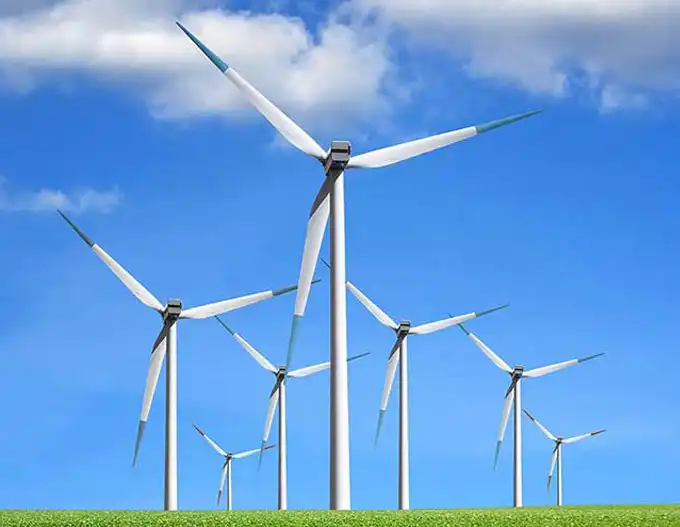Harnessing the Power of Wind Energy
Harnessing the Power of Wind Energy
In the quest for sustainable energy sources, wind energy stands out as one of the most promising and widely adopted alternatives to fossil fuels. Harnessing the power of wind has been a practice for centuries, but modern advancements have transformed it into a significant contributor to the global energy mix. This article explores the evolution, benefits, challenges, and future prospects of wind energy, with a focus on its role in the United Kingdom and beyond.
The Evolution of Wind Energy
The use of wind power dates back to ancient times when it was primarily employed for sailing ships and milling grain. The concept of harnessing wind for electricity generation began in the late 19th century, but it was not until the latter half of the 20th century that wind energy began to be seriously considered as a viable source of large-scale power generation.
In the UK, wind energy has experienced remarkable growth over the past few decades. The first commercial wind farm in the country, located in Delabole, Cornwall, was commissioned in 1991. Since then, the industry has expanded rapidly, driven by technological advancements, government policies, and growing environmental awareness. Today, the UK is a global leader in offshore wind energy, with large-scale wind farms such as the Hornsea One and Dogger Bank projects showcasing the country’s commitment to renewable energy.
Benefits of Wind Energy
One of the most significant advantages of wind energy is its sustainability. Unlike fossil fuels, wind is a renewable resource that does not deplete over time. As long as the wind blows, energy can be generated, making it an essential component of a sustainable energy future.
Wind energy is also environmentally friendly. It produces no greenhouse gases during operation, meaning it contributes little to climate change compared to traditional energy sources. Moreover, wind turbines have a relatively small physical footprint, allowing land to be used simultaneously for other purposes, such as agriculture or conservation.
In economic terms, wind energy creates jobs and stimulates local economies. The construction, operation, and maintenance of wind farms require a skilled workforce, leading to job creation in rural and coastal areas. Additionally, the growth of the wind energy sector has spurred investment in related industries, such as manufacturing, research, and development.
From a national energy security perspective, wind energy reduces dependence on imported fossil fuels. This not only enhances energy security but also shields countries from volatile global energy markets. For the UK, which has abundant wind resources, wind energy offers a pathway to greater energy independence.
Challenges of Wind Energy
Despite its many benefits, wind energy faces several challenges. One of the primary concerns is intermittency. Wind does not blow consistently, and this variability can lead to fluctuations in energy production. While advances in energy storage technologies and grid management are helping to mitigate this issue, the challenge of integrating large amounts of intermittent wind energy into the grid remains significant.
Another challenge is the environmental and social impact of wind farms. Although wind energy is much cleaner than fossil fuels, wind turbines can have negative effects on local wildlife, particularly birds and bats. Additionally, the visual and noise impact of wind farms has led to opposition from some communities, particularly in densely populated areas or regions with valuable landscapes.
The initial cost of wind energy infrastructure is also a consideration. While the cost of wind energy has decreased significantly over the past decade, driven by economies of scale and technological improvements, the upfront investment required to develop wind farms can still be substantial. This is especially true for offshore wind farms, where construction and maintenance are more complex and expensive than onshore projects.
The Role of Wind Energy in the UK
The UK has embraced wind energy as a cornerstone of its renewable energy strategy. The country’s geographic location, with its long coastline and strong wind resources, makes it ideally suited for both onshore and offshore wind farms. As of 2023, wind energy accounted for over 25% of the UK’s electricity generation, with offshore wind alone contributing nearly 15%.
The UK government has set ambitious targets for the expansion of wind energy. By 2030, the country aims to have 40 GW of offshore wind capacity, enough to power every home in the country. Achieving this target will require continued investment in wind energy infrastructure, innovation in technology, and a supportive policy framework.
One of the key drivers of the UK’s success in wind energy has been its commitment to offshore wind. Offshore wind farms benefit from stronger and more consistent winds compared to onshore locations, leading to higher energy yields. Furthermore, offshore wind farms can be built on a larger scale without the same level of visual and noise concerns associated with onshore developments.
The development of floating wind technology is also set to play a significant role in the future of UK wind energy. Floating wind turbines, which are anchored to the seabed but not fixed in place, allow for the exploitation of deeper waters where traditional fixed-bottom turbines cannot be installed. The UK is already a leader in this emerging technology, with projects such as the Kincardine and Hywind Scotland wind farms demonstrating its potential.
The Global Perspective
Globally, wind energy is one of the fastest-growing sources of electricity. As of 2023, there were over 700 GW of installed wind capacity worldwide, with China, the United States, and Germany leading the way. The International Energy Agency (IEA) projects that wind energy could provide nearly 20% of global electricity by 2050, up from around 7% today.
However, the growth of wind energy is not without its challenges. In addition to the intermittency and environmental concerns mentioned earlier, the global supply chain for wind turbine components faces constraints. The demand for critical materials, such as rare earth metals used in turbine magnets, is increasing, raising concerns about supply shortages and environmental impacts from mining activities.
To address these challenges, ongoing innovation is essential. Advances in turbine design, such as the development of larger and more efficient turbines, are helping to increase energy yields and reduce costs. Additionally, improvements in grid integration and energy storage technologies are making it easier to manage the variability of wind energy.
Future Prospects
The future of wind energy looks promising, both in the UK and globally. The ongoing transition to renewable energy, driven by the need to reduce greenhouse gas emissions and combat climate change, is set to accelerate the deployment of wind power. In the UK, continued investment in offshore wind, coupled with the development of new technologies such as floating wind and energy storage, will be key to achieving the country’s renewable energy goals.
Moreover, international cooperation will play a crucial role in the future of wind energy. Sharing knowledge, technology, and best practices across borders can help to overcome the challenges facing the industry and ensure that wind energy contributes to a sustainable and resilient global energy system.
In conclusion, wind energy is a vital component of the transition to a low-carbon future. While challenges remain, the benefits of wind energy—its sustainability, environmental friendliness, and economic potential—make it an indispensable part of the global energy mix. As the UK and other countries continue to invest in wind energy, the power of the wind will increasingly be harnessed to create a cleaner, greener, and more secure energy future.













